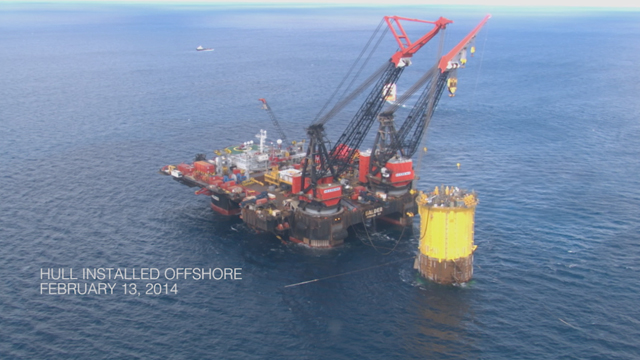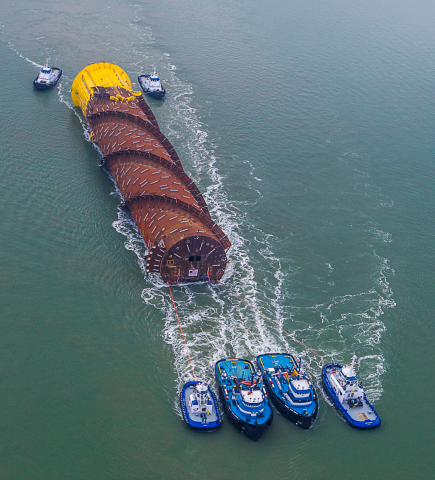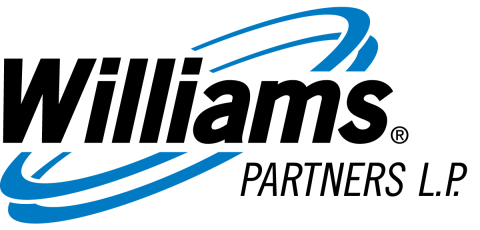TULSA, Okla.--(BUSINESS WIRE)--Williams Partners L.P. (NYSE: WPZ) reported key construction milestones and progress on a tieback expansion as its proprietary Gulfstar FPS™ (Floating Production System) nears completion in the eastern deepwater Gulf of Mexico. The Gulfstar One project is the first spar-based floating production system with major components built entirely in the United States.
After mooring the floating spar to the ocean floor in February, crews in March lifted and installed Gulfstar’s three-level topside structure. The floating production system is moored 135 miles southeast of New Orleans in about 4,000 feet of water. It will serve as a hub that aggregates production and then combines production handling services with oil and gas export pipeline services, which feed Williams’ downstream oil and gas gathering and processing services.
Once operational, the Gulfstar’s base design will produce up to 60,000 barrels of oil per day and 135 million standard cubic feet of gas per day with additional tieback capacity. With hook-up and commissioning activities currently underway, Gulfstar is on schedule to start serving anchor customers in the third quarter of 2014 and Gunflint in 2016.
In addition to previously announced anchor commitments, Gulfstar in January executed agreements with Gunflint field owners Noble Energy, Inc., Ecopetrol America Inc., Marathon Oil Company and Samson Offshore, LLC. The Gunflint tieback is designed and engineered with modifications expected to be completed after the base Gulfstar project is completed.
“Landing this Gunflint tieback before first oil is received from the anchor tenants demonstrates the promise of the Gulfstar model for producers, both economically and technically,” said Rory Miller, senior vice president of Williams’ Atlantic-Gulf operating area. “As a midstream company, Williams is focused on infrastructure solutions of this nature that connect the best supplies with highest-value markets. Gulfstar is one of approximately $4.5 billion in large-scale projects we expect to bring into service in 2014 and 2015.”
Major components of the Gulfstar were built entirely in the United States, creating approximately 1,000 domestic jobs and allowing quick parts replacement and reduced platform downtime. Gulf Marine Fabricators built the hull in Aransas Pass, Texas and Gulf Island Fabrication, Inc. constructed the topsides in Houma, La.
“Gulfstar provides a complete ‘floating production system to market clearing point’ solution for producers in the Gulf for their oil, gas and liquids production, designed specifically to maximize their net present value and minimize risk,” said Mark Cizek, Gulfstar Project Director. “The ‘design one, build many’ construction concept allows for standardized design options and enhanced safety and reliability of each unit. The repeatable concept also increases speed to market.”
Williams Partners developed the Gulfstar One project and it has a 51 percent ownership interest. Marubeni Corporation has a 49 percent interest in the Gulfstar One project.
About Williams Partners L.P. (NYSE: WPZ)
Williams Partners L.P. is a leading diversified master limited partnership focused on natural gas transportation; gathering, treating, and processing; storage; natural gas liquid (NGL) fractionation; and oil transportation. The partnership owns interests in three major interstate natural gas pipelines that, combined, deliver 14 percent of the natural gas consumed in the United States. The partnership’s gathering and processing assets include large-scale operations in the U.S. Rocky Mountains and both onshore and offshore along the Gulf of Mexico. Williams (NYSE: WMB) owns approximately 66 percent of Williams Partners, including the general-partner interest. More information is available at www.williamslp.com, where the partnership routinely posts important information.
Portions of this document may constitute “forward-looking statements” as defined by federal law. Although the partnership believes any such statements are based on reasonable assumptions, there is no assurance that actual outcomes will not be materially different. Any such statements are made in reliance on the “safe harbor” protections provided under the Private Securities Reform Act of 1995. Additional information about issues that could lead to material changes in performance is contained in the partnership’s annual reports filed with the Securities and Exchange Commission.




